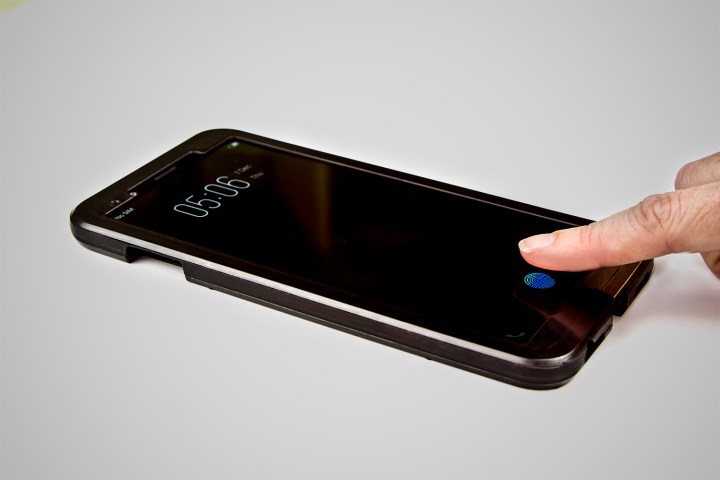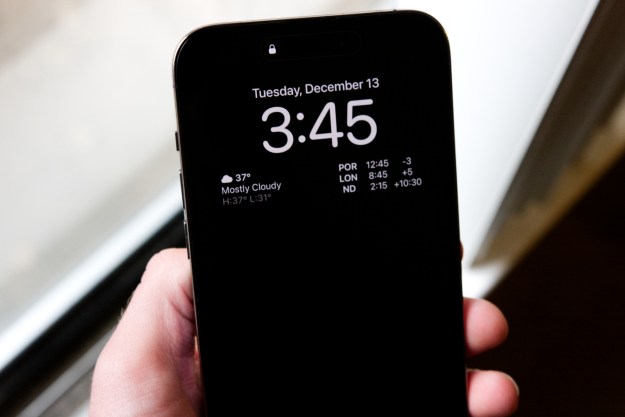
With smartphone bezels shrinking, there’s less room for a fingerprint sensor on the front. Android smartphone sensors are often placed on the back of the phone, while the iPhone X ditched one altogether, opting for Face ID instead. On Thursday, May 31, Synaptics revealed that new flagship Xiaomi Mi 8 Explorer Edition would one-up them all.
Doing what others couldn’t
- 1. Xiaomi Mi 8 SE
- 2. Xiaomi Mi 8
- 3. Xiaomi Mi 8 Explorer Edition
The Xiaomi Mi 8 comes in three distinct flavors: the standard Mi 8, the Mi 8 Explorer Edition, and the Mi 8 SE. The Explorer Edition comes with a transparent look (that may not actually be real) and powerful 3D face-scanning tech similar to the iPhone X.
But it’s what’s contained under the Mi 8 Explorer Edition’s 6.21-inch AMOLED display that really caught the tech world’s attention — an under-display fingerprint scanner.
The Synaptics Clear ID Fs9500 is a sensor designed for smartphones that have bezel-free, button-free infinity displays. Clear ID is an ultra-thin optical sensor that captures your fingerprint with light produced from the OLED panel on the smartphone. It works under OLED displays and uses an electric current to capture the imprint of your finger. As a reminder, this is exactly the tech that Apple failed to achieve in the fingerprint scanner-less iPhone X, and that Samsung was rumored to be working on for the Galaxy S9 and Note 8.
But how does it work? The sensor detects the finger, the OLED display then lights up the finger, the sensor scans the fingerprint, and the “matcher” then verifies the image. Once it’s confirmed the imprint is yours, you will be granted access. The sensor can also be placed anywhere on the screen the manufacturer wants. The Clear ID sensor should not only be able to work on flexible or rigid displays, but can also work if the phone has a screen protector or if the screen is wet. It’s also said to be twice as fast as 3D facial recognition and has a 99-percent spoof-attack rejection rate.
Now that Clear ID has made its way into Xiaomi’s Mi 8 transparent Explorer Edition, Synaptics’ claims will finally be put to the test. While the Chinese smartphone manufacturer isn’t a well-known brand in the United States, it is popular in other markets — especially as the highest selling brand in India. It’s also the fourth-highest selling smartphone brand globally.
Top level specs
The Explorer Edition and the standard Mi 8 are also plenty powerful and come equipped with the Snapdragon 845, 6GB of RAM, and either 128GB or 256GB of onboard storage. Xiaomi is currently boasting that Snapdragon 845 in the Mi 8 achieved an AnTuTu benchmarking score of over 300,000 — for context, the powerful Galaxy S9 Plus scored 263,591, making Xiaomi’s boast very impressive indeed. The enormous 6.21-inch displays will have an aspect ratio of 18.7:9, and a 86.68% screen-to-body ratio.
They both also come with two 12-megapixel lenses around the back of the phone, joined by a massive 20MP selfie lens. These lenses are boosted with Xiaomi’s AI-enhanced studio lighting, which the company boasts is similar to the iPhone X’s portrait modes. It also comes with NFC, support for QuickCharge 4.0 charging, and a hefty 3,400mAh battery.
The lower-powered Mi 8 SE is the first device to use Qualcomm’s new Snapdragon 710 processor, and while power has been toned down, it’s still similarly impressive. It’s built for anyone who prefers a smaller phone, with a 5.88-inch AMOLED display. The rear camera suite is comprised of dual 12MP and 5MP lenses and the battery has a smaller 3,120mAh capacity — but that should be enough with the the Snapdragon 710’s power efficiency.
All three models of the Mi 8 will be eligible for the beta of MIUI 10, which begins in June for the Mi 8, and July for the Mi 8 Explorer Edition and Mi 8 SE.
The company is mainly known for manufacturing phones that look similar to Apple’s smartphones. But Xiaomi offers them at a much cheaper price, and its devices run Android rather than iOS, of course. While we have yet to get our hands on the Mi 8, we have given the budget Xiaomi Mi A1 and Xiaomi Mi Mix 2 pleasant reviews.
The Xiaomi Mi 8 will retail for 2,699 yuan (about $420) when it launches June 5, and the Mi 8 SE will cost 1,799 yuan (about $280) when it releases June 8. The Mi 8 Explorer Edition will set buyers back 3,699 yuan (about $580), but there’s no release date set for that model yet.
Updated on June 1: Added the the release date and further details on the Mi 8 SE.
Editors' Recommendations
- This one thing could make iOS 18 the best iPhone update in years
- This one, crucial thing will make or break the Apple Vision Pro
- Samsung’s $450 phone does one thing way better than the iPhone 14
- I love the Galaxy S23 — here are 5 things the iPhone still does better
- My life with the Apple Watch Ultra transformed after changing this one thing





